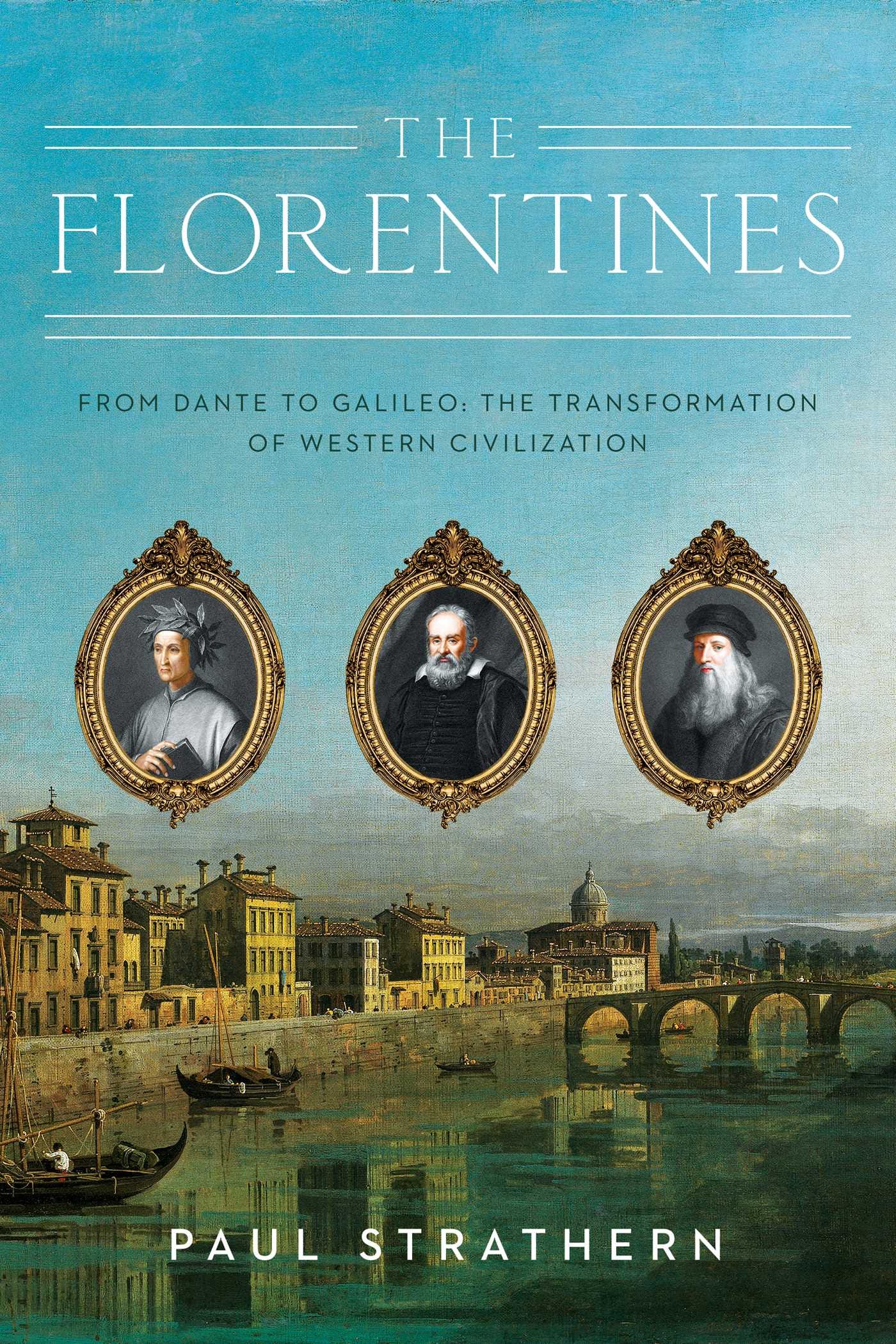The Florentines From Dante to Galileo: The Transformation of Western Civilization by Paul Strathern
From the High Middle Ages to the Scientific Revolution Through Florentine History
Paul Strathern’s The Florentines provides a succinct and informative tour of Florentine history through some of its most significant personages. Strathern begins with the High Middle Ages (if we may still use this term) of Dante (1265-1321) and concludes with Galileo Galilei (1564-1642) and the Scientific Revolution. Between these two figures lies the Florence of the Italian Renaissance, populated by names most will recognize: Boccaccio, Petrarch, Brunelleschi, Alberti, Botticelli, the Medici, Ficino, Savonarola, Machiavelli, Donatello, Leonardo, and Michelangelo. The list could go on, but you get the point. These individuals and their contemporaries in and around Florence in a period from the mid-15th to the mid-16th centuries changed the course of Western civ (no, the book title is not puffery). And these individuals ignited cultural changes that spread quickly beyond Italy into Northern Europe.
In anticipation of a trip to Italy later this year provided me with a good excuse to dive into all things Renaissance (and Italian). I had the good fortune to have taken a course in Renaissance history as an undergrad, and I learned a lot. But I have to admit that now almost 50 years later, some details are, shall we say, a bit hazy. I was therefore seeking a single volume work that would tie individuals, events, and dates together in one easily accessible work. (N.B. Like any serious student of history, I abhor the thought that some teach history simply as a sequence of dates and test their students accordingly, thereby promoting the memorization of dates. Dates are mere placeholders for the sequence of events. Dates serve as the skeleton of any narrative or analysis. I remember dates, roughly at least, if not always perfectly, because they serve to create the chronology necessary for a narrative or analysis. Otherwise, the past would only be a collection of indistinguishable goo.)
By focusing on key individuals and their environments, Strathern allows a narrative of Florence as a city, as a community, to emerge throughout the book. Strathern doesn’t address non-elites in any depth. The shopkeepers, artisans, workers, and the destitute serve, like the chorus or the “mob” in a play or opera. The leads (elites or “stars”) recite the soliloquies or sing the arias. But we don’t remember Florence for what made it typical, but for what made it unique. On the other hand, the acts of great figures, especially those of the great public figures, like the Medici, and political actors like Machiavelli, are always engaged in a complicated dance with the common people. And, despite a lack of education, the common people had a sense of when they were getting the short end of the stick or when the culture was changing too much for comfort. (On occasion they would participate in book burnings (see Savonarola and the “bonfire of the vanities”), or they would trash artworks.)
To be clear, this is a popular history. It is not the result of searching through dusty, decaying archives or engaging first-hand with ancient texts. It is a narrative built on the foundational work of others. Yet, although it’s not the stuff upon which dissertations are written, it nevertheless serves a very useful purpose. It provides an easy-to-read and comprehend guide to this far-away land and time when the course of history changed dramatically. I don’t know that there could be a more accessible guide to the Florentine Renaissance for someone wanting to get an overview of this fascinating era. Or for someone who wants to dust away nearly 50 years of cobwebs on his knowledge of this fascinating time.
4/5 stars based on the book’s utility and clear, well-organized prose.



